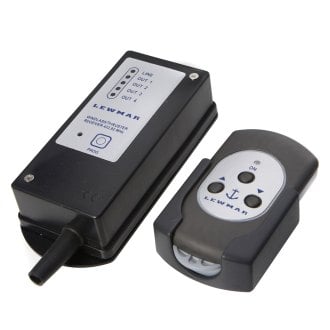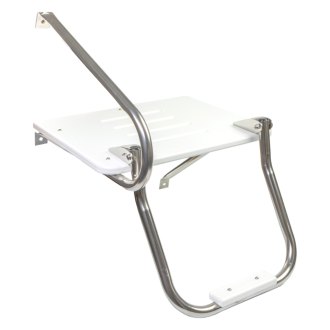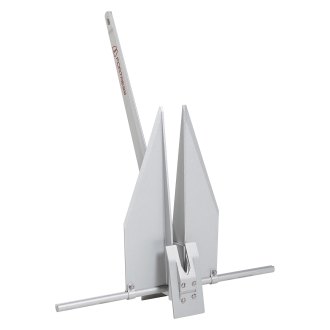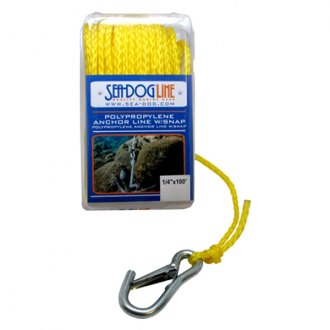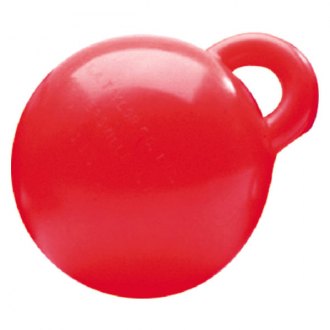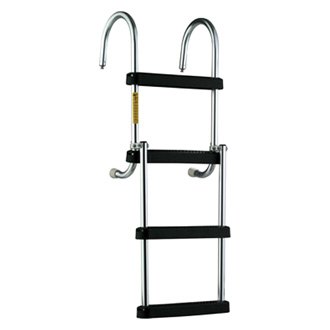Anchors & Docking

Featured Products
-
 $1,796.80 - $2,599.99
$1,796.80 - $2,599.99 -
 $13.63 - $17.06
$13.63 - $17.06 -
 $472.56 - $601.12
$472.56 - $601.12 -

-
 $2.70 - $20.93
$2.70 - $20.93 -
 $274.43 - $290.45
$274.43 - $290.45 -
 $481.96
$481.96 -
 $5.54 - $28.80
$5.54 - $28.80 -
 $55.32 - $115.48
$55.32 - $115.48 -
 $19.77 - $35.63
$19.77 - $35.63
There are 2 ways to moor a boat – you can tie up to a stationary pier, dock or landing with dock lines, and you can use an anchor to keep the boat from drifting when you want to stop at a particular spot on the water for fishing, swimming, or just a little rest & relaxation. Here on our digital shelves you’ll find all your anchoring & docking needs, whether you’re mooring your boat for a few hours or for the off-season. Everything to keep your vessel securely in place is right here including anchors, lines & chains, windlasses, and fenders & buoys, as well as cleats, bumpers, mooring whips, ladders and many more anchoring & docking related accessories.
There are many types of anchors because ocean, lake, and river beds can vary a great deal in their consistency. The bottom can be made up of sand, clay, mud, grass, rocks or coral, and there are anchors that are specially designed for each of these surfaces, and some that excel on several different bottom conditions. For example, Bruce or Claw anchors are configured to plow into sandy or muddy bottoms, the hooks on Grapnel anchors are for catching on rocks and coral, and Box anchors work well on both muddy and rocky bottoms. Our anchor selection is huge, so you’re sure to find the right one no matter what the bottom’s like where you pilot your boat, and in addition to traditional anchors we also offer Beach anchors and Sea anchors. With a Beach anchor you can secure your craft to shore when there’s no dock or anything to moor to. A Sea anchor is like a water parachute and works in a similar manner in that will slow the boat’s rate of drift but not stop it altogether. They are commonly deployed from the bow to make the boat ride more smoothly in rough water.
Of course, you need a means of deploying your anchor when you want to moor and weighing anchor when it’s time to get underway, and we have everything for the job including anchor rode, anchor shackles and swivels, anchor rollers, chain stoppers, deck cleats and windlasses. The anchor rode connects the anchor to the boat and may be made up of nylon line, which is typical on small boats, chain, which is customary on large boats, or a combination of the two, which is the most common configuration for many boats. On a combination rode most of the rode is line, which is connected to a chain attached to the anchor. The line is elastic and lightweight, while the chain resists abrasion from the bottom that would damage the line. A windlass takes the backache and strain out of weighing anchor. A windlass is an electric winch that will, with the touch of a button, haul in the rode and anchor. We have windlasses for every size boat and type of rode, including vertical windlasses that take up less space by locating part of the structure below deck, and horizontal windlasses that are entirely on the deck but simpler to install.
When tying up at a dock you’ll need dock lines and places to attach them. We have a huge selection of lines in a variety of colors and construction, including popular 3-strand and single and double braided lines. Dock lines are tied to cleats, which are used both on the vessel and the dock, and lines can also be attached to dock pilings. Chocks can also be attached to the deck and used to alter the direction of dock lines and prevent line chafing. Chafe guards can also be attached to dock lines to prevent abrasion and snubbers can be attached to provide greater line elasticity. Bumpers that are mounted on the dock and fenders, which are tied to the boat, are used to prevent hull damage when the boat is docked. When a boat is docked in a slip it’s tied up at both sides to center the vessel in the slip and prevent contact with the dock, but when a boat is tied up alongside a dock, fenders and dock bumpers are crucial for cushioning.
Nevertheless, when docking alongside your boat can still become scratched when it’s tossed around by boat wakes and high winds. To prevent damage consider docking your boat with our mooring whips. Mooring whips consist of two fiberglass poles that extend from bases mounted on the dock in line with the cleats on the boat. Dock lines are attached to the whips and the boat cleats and then tensioned to secure the boat in a position that’s a safe distance from the dock. If you need to moor your boat in open water, a mooring buoy is a more dependable way to do it than just using the boat’s anchor. In this system a floating buoy is permanently secured to the bottom with a heavy mushroom anchor or concrete blocks. We offer several styles of mooring buoys including pendant buoys that keep the mooring line dry and protect the boat from contact with the mooring hardware.
If you dock your boat year-round in a northern clime you must take steps to prevent damage to your vessel’s hull, rudder and prop caused by ice. The propeller on one of our de-icers will draw warmer water to the surface and circulate this warmer water to prevent ice formation and melt existing ice. One of our shore power pedestals installed at your dock provides a convenient source of shore power for your boat and power for your de-icer. We also offer many other useful dock and boat accessories including dock carts that make it easy to tote your gear from your vehicle to the boat; lockable dock boxes with gas struts in many sizes and capacities to stow your boating gear; boat stands and supports; dock racks for storing kayaks, surf boards and other watersports equipment; flip-up and stationary ladders for the dock and boarding ladders for the boat; boat hooks, piling caps, and much more.


